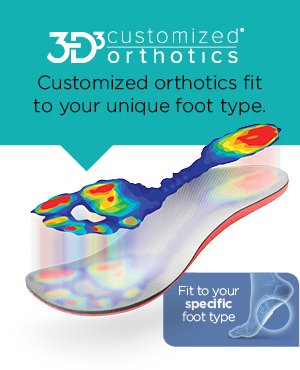ARTHRITIS
Learn more about diagnosis, treatment, and prevention
COULD I HAVE ARTHRITIS?
|
To find out, take a closer look at where you Which parts of my body hurt? A.) Feet |
WHAT ARE THE CAUSES AND SYMPTOMS?
There are more than 100 documented types of arthritis that can affect you as a result of joint trauma, infection, or age. So if you are over 50, there's a good chance you suffer from some sort of arthritis in your feet, knees, hips, or lower back, with the pain ranging from minimal to severe.So, what is arthritis, exactly? It’s inflammation of your joints.
Joints allow us to perform movements, such as bending your knees, or sitting down and standing up. Inside those joints are cartilage, which act as the cushions that absorb shock and allow your bones to move without rubbing one another.
But when the cartilage and lining of the joints are damaged, those movements become difficult and often painful.
Your feet have 33 separate joints that help you stand, walk, and run. The sheer number makes your feet particularly susceptible to developing arthritis in one or more of those joints.
Arthritis actually encompasses a range of conditions, including severely debilitating diseases such as rheumatoid arthritis. But the most common is osteoarthritis.
Osteoarthritis is also called degenerative arthritis. Over time, the inflammation can cause ADDITIONAL PROBLEMS THAT AFFECT YOUR MOBILITY AND INCREASE DISCOMFORT, SUCH AS:
- Cartilage destruction.
- Bone spurs and other damage to your bone structure.
- Formations of cysts, which are sacs of thickened joint material and fluid.
- A history of arthritis in your family.
- Aging.
- Obesity.
- Joint injury or trauma.
- Infections. Some bacterial or viral infections can affect the joints and lead to arthritis.
Think you might have arthritis?
TAKE THIS SELF-ASSESSMENT
Self- Assessment Quiz
- Early-morning joint stiffness?
- Limited movement of any joints?
- Swelling in my joints?
- Recurring joint pain or tenderness?
- Redness or heat around my joints?
- Any of the above symptoms combined with skin changes such as rashes or growths?
If you answered “yes” to any of these questions, you show some key symptoms of arthritis. Confirm your condition with your doctor, and keep reading for recommendations on treatment and relief from the experts at FootSmart.
ARE THERE ANY SERIOUS CONCERNS WITH ARTHRITIS?
Over time, you may experience more and more difficulty walking and performing everyday movements. Arthritis can progress to the point that it becomes truly disabling. In those cases, you may need surgery to replace or realign a joint.
HOW DO I TREAT AND PREVENT ARTHRITIS?
Many options exist for treating arthritis, but they all share the same goal—controlling inflammation. You also want to move your joints as much as possible.
Explore advice from the experts at FootSmart on finding relief for lower-body arthritis. Then talk with your doctor about which options are best for you.
Wear shoes with:
- Good all-around support and cushioning, to reduce shock and impact on your joints.
- High, wide toe boxes, especially if you have misshapen toes.
- Rocker bottom soles, to make walking easier and reduce stress on the ball of your foot.
Use other supports to reduce stress on your joints, such as:
- Removable insoles or other shoe orthotics.
- Foot, ankle or knee supports.
- Toe straighteners and protectors.
Use medications to find relief:
- Anti-inflammatory creams, analgesics, or other topical treatments.
- Aspirin or other anti-inflammatory medications.
- Over-the-counter glucosamine and chondroitin supplements, which have been reported to improve joint health.
Exercise
Especially consider low-impact activities such as walking, swimming, or using an exercise bike, elliptical, or stepper.
Hot / cold therapy on your affected areas can help relieve pain and inflammation.
In more severe cases, your doctor may recommend physical therapy or surgery.

